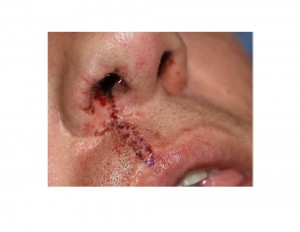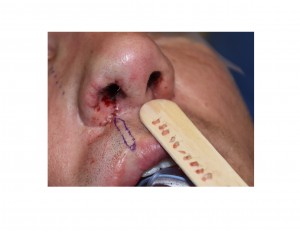Despite the best efforts at cleft lip repair, whether done as an infant, teenager or as an adult cleft lip revision, the ability to detect the cleft lip scar usually persists. This is most manifest in men because the thickness of the upper lip beard skin on both sides of the cleft lip scar make the hairless scar that much more apparent.
While cleft lip scar revision is the best method to minimize the width of the cleft lip scar, it does not always work as well as one would like. It can be very difficult to get a cleft lip scar that is narrow as one would like, no matter how many efforts are made to revise the scar.

When placing hair transplant into the cleft lip scar it is important to orient the hairs in a completely downward orientation that is nearly parallel to the surface of the skin. This will allow them to grow downward in the same direction as the rest of the upper lip hairs.
Dr. Barry Eppley
Indianapolis, Indiana



